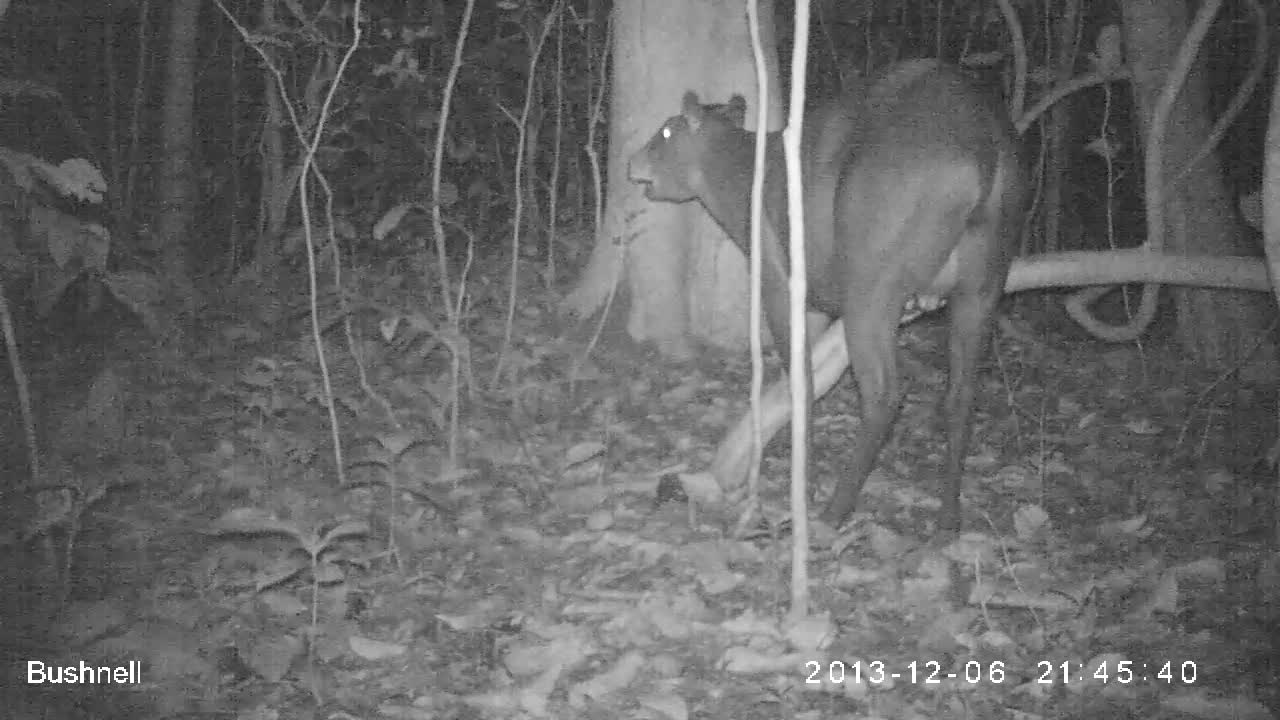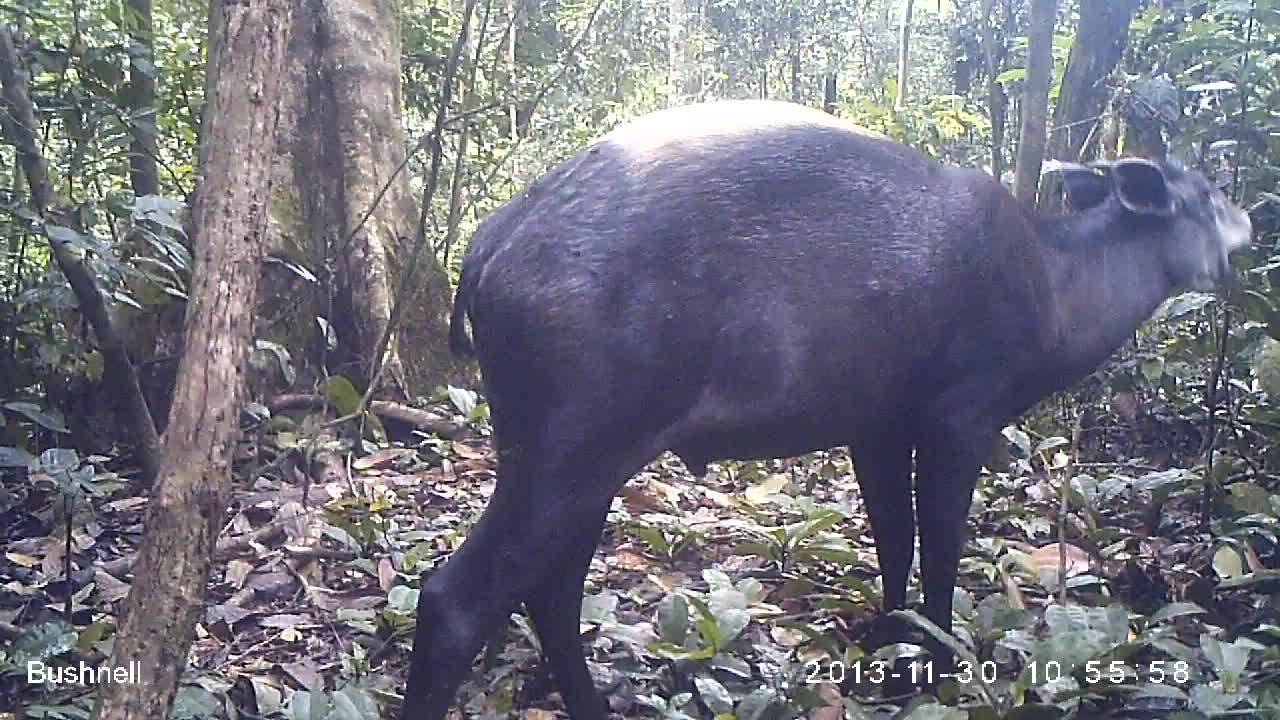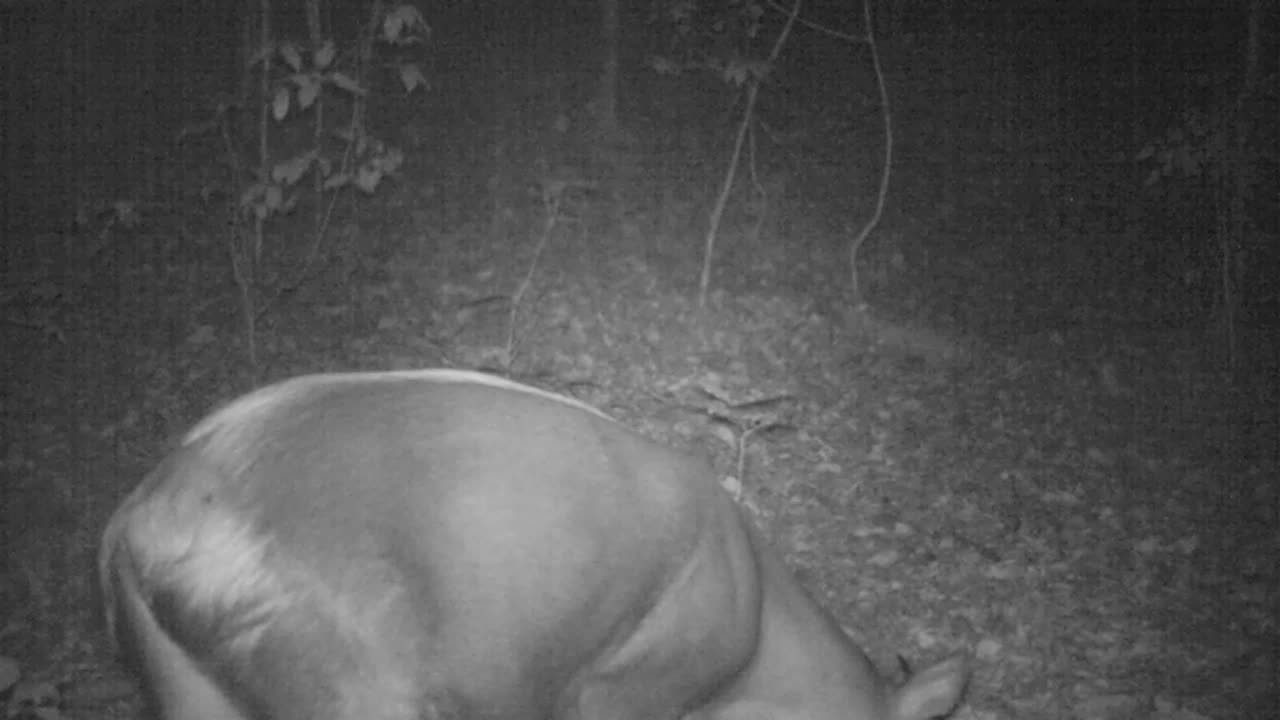If you've classified much at Restless Star, one of our current sites, you've probably seen a lot of yellow-backed duikers. They may not always make for the most captivating videos, but for this post, I wanted to talk a bit about what makes yellow-backed duikers interesting.
First off, yellow-backed duikers have the widest distribution of any forest-living duikers, and they're the only duiker species we've seen at both West Africa sites (e.g. Aged Violet) and East Africa sites (e.g. Restless Star). They are one of the two largest duiker species (the other being the Jentink's duiker) and can weigh over 70 kg, with horns over 20 cm long. Body size varies somewhat by subspecies, with the Restless Star individuals belonging to the smallest subspecies. The most variable feature across their range, though, is the presence or absence of a "haunch spot". In West Africa, yellow-backed duikers have a large yellow triangle of fur extending back to around their hips, and the fur on their rear is a solid dark color, however in East Africa, they have an additional pale area of fur on their rear. Next time you come across a yellow-backed duiker in a video, see if you can guess which site the video is from based on the color of the rear!
(Still images from ACP0002zbs ACP00035yv ACP000clru ACP000bygc)
The last (and maybe most amazing) feature of yellow-backed duikers that I'm going to talk about is their ability to raise the yellow fur on their back. Normally the yellow fur lies flat on the back as they amble around or rest, but when they are startled or on alert, they can make the fur stick straight up, completely changing the outline of their body! Have a look in the video below.
(Original video here ACP000cc29)
Hopefully you have a new-found appreciation for yellow-backed duikers after this post! See you soon over at Chimp & See, where we have plenty of yellow-backed duikers and other animals for you to watch!
Source: Kingdon, Jonathan, et al. Mammals of Africa. Vol. 6. A&C Black, 2013.
First off, yellow-backed duikers have the widest distribution of any forest-living duikers, and they're the only duiker species we've seen at both West Africa sites (e.g. Aged Violet) and East Africa sites (e.g. Restless Star). They are one of the two largest duiker species (the other being the Jentink's duiker) and can weigh over 70 kg, with horns over 20 cm long. Body size varies somewhat by subspecies, with the Restless Star individuals belonging to the smallest subspecies. The most variable feature across their range, though, is the presence or absence of a "haunch spot". In West Africa, yellow-backed duikers have a large yellow triangle of fur extending back to around their hips, and the fur on their rear is a solid dark color, however in East Africa, they have an additional pale area of fur on their rear. Next time you come across a yellow-backed duiker in a video, see if you can guess which site the video is from based on the color of the rear!
West Africa
East Africa
(Still images from ACP0002zbs ACP00035yv ACP000clru ACP000bygc)
The last (and maybe most amazing) feature of yellow-backed duikers that I'm going to talk about is their ability to raise the yellow fur on their back. Normally the yellow fur lies flat on the back as they amble around or rest, but when they are startled or on alert, they can make the fur stick straight up, completely changing the outline of their body! Have a look in the video below.
(Original video here ACP000cc29)
Hopefully you have a new-found appreciation for yellow-backed duikers after this post! See you soon over at Chimp & See, where we have plenty of yellow-backed duikers and other animals for you to watch!
Source: Kingdon, Jonathan, et al. Mammals of Africa. Vol. 6. A&C Black, 2013.




No comments:
Post a Comment